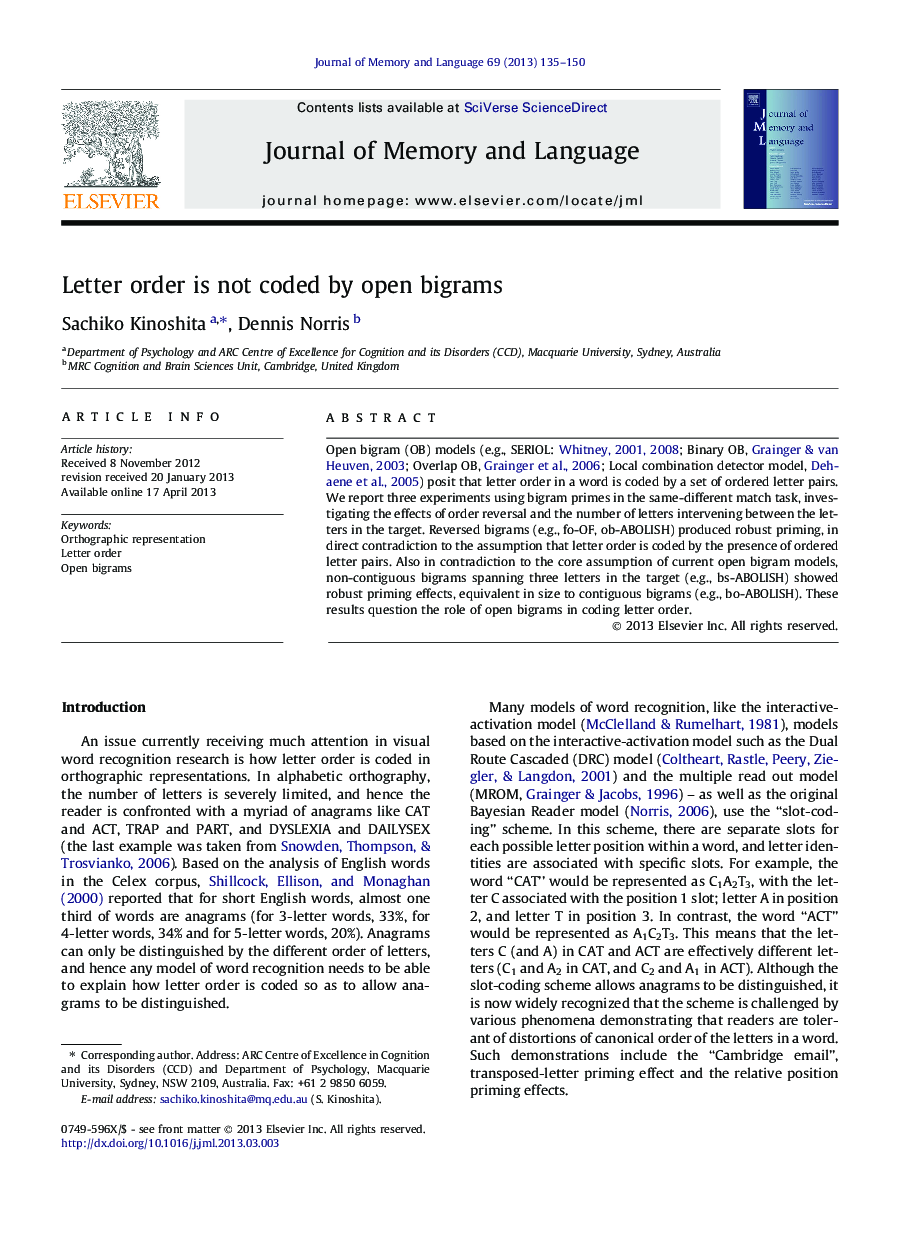| Article ID | Journal | Published Year | Pages | File Type |
|---|---|---|---|---|
| 10459747 | Journal of Memory and Language | 2013 | 16 Pages |
Abstract
Open bigram (OB) models (e.g., SERIOL: Whitney, 2001, Whitney, 2008; Binary OB, Grainger & van Heuven, 2003; Overlap OB, Grainger et al., 2006; Local combination detector model, Dehaene et al., 2005) posit that letter order in a word is coded by a set of ordered letter pairs. We report three experiments using bigram primes in the same-different match task, investigating the effects of order reversal and the number of letters intervening between the letters in the target. Reversed bigrams (e.g., fo-OF, ob-ABOLISH) produced robust priming, in direct contradiction to the assumption that letter order is coded by the presence of ordered letter pairs. Also in contradiction to the core assumption of current open bigram models, non-contiguous bigrams spanning three letters in the target (e.g., bs-ABOLISH) showed robust priming effects, equivalent in size to contiguous bigrams (e.g., bo-ABOLISH). These results question the role of open bigrams in coding letter order.
Keywords
Related Topics
Life Sciences
Neuroscience
Cognitive Neuroscience
Authors
Sachiko Kinoshita, Dennis Norris,
